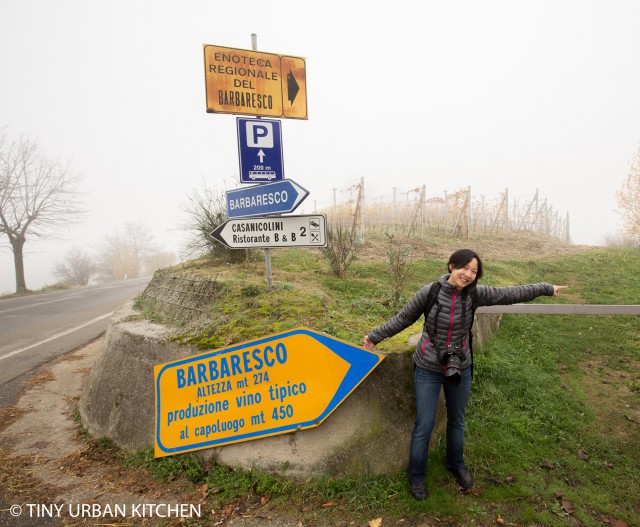
This is the third post in the Around the World Birthday Extravaganza Series. Because there will be many, many posts in this series, I will list all other posts from this series at the bottom of the post.
Wine, wine, wine.
To be honest, when I first chose Alba, Italy as a destination for my Around the World birthday trip, I really didn't have wine on my mind. My thoughts were laser-focused on one thing only: white truffles. However, as I began to research the area, I realized that the Piedmont region - more specifically the Langhe part of the Piedmont region - was very well known for wine, including Barolo, Barbaresco, and many other varieties.
Although we are relatively familiar with American wines (having visited Napa and Sonoma numerous times), we knew embarrassingly little about Italian wines. At most, we were familiar with Chianti, and had sampled various Nebbiolo grape wines (e.g., Barolo, Barbaresco) at Italian restaurants in Boston. However, that was really the limit of our knowledge.
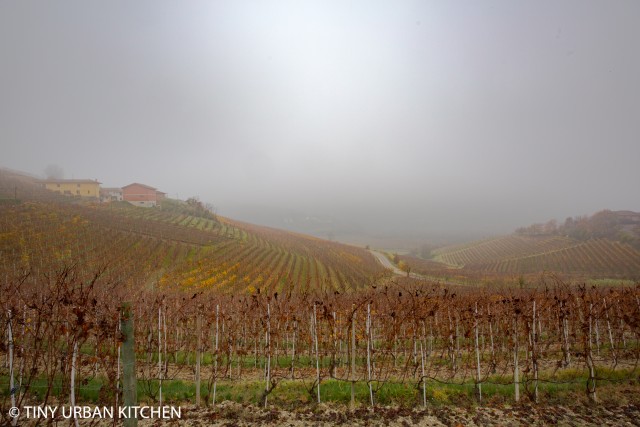
We decided to take a two-day private tour of the region with Travel Langhe, a travel company run by an American husband-and-wife duo (Robert and Leslie Alexander) who have lived in Italy for over 1o years. We were drawn to them for several reasons. First, both Robert and Leslie are trained sommeliers and were deeply involved in the food and wine industry before moving to Italy. They really understand and appreciate good food and wine. Additionally, Leslie is a trained chef, and also offers cooking classes as part of the tour. They are fluent in Italian and well connected to the local people of the area.
Finally, it's a huge bonus that Robert is a serious photographer and offers photography-focused tours. In fact, the moment Robert saw our cameras (yes! we were Canon brethren!), we all hit it off immediately. We shared thoughts and ideas about our photography workflows, challenges with photography when blogging, and even borrowed each others' lenses and equipment during the two days.
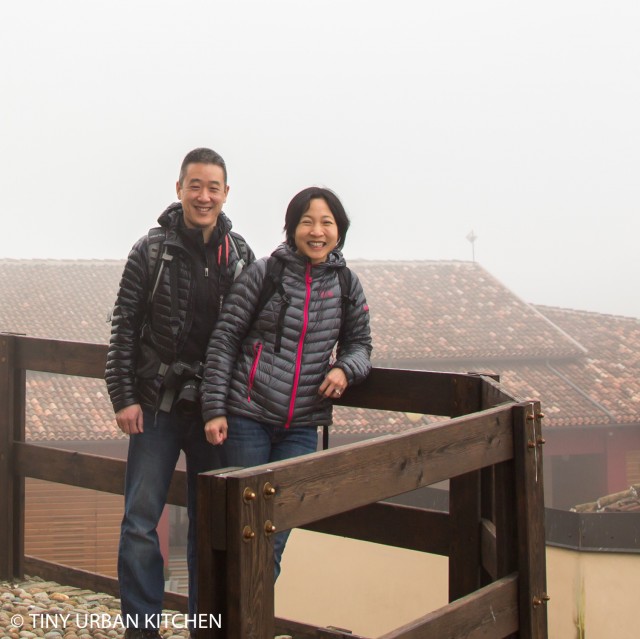
It's really, really nice to have a good photographer on your trip. You can finally get good pictures of you and your travel companion together (versus trusting that strangers on the street will snap a decent photo of you!).
Robert swung by our hotel right at 9AM on the first day of our tour. He immediately greeted the owner of our hotel (in Italian, of course) and they quickly invited him in for some breakfast. It did not take long before we started to realize that Robert seemed to know everyone in the area. The Langhe region is really, really small, and everybody knows everybody else. After finishing breakfast, we hopped into Robert's car and proceeded through rolling, foggy hills towards the village of Barbareso, our first stop of the day.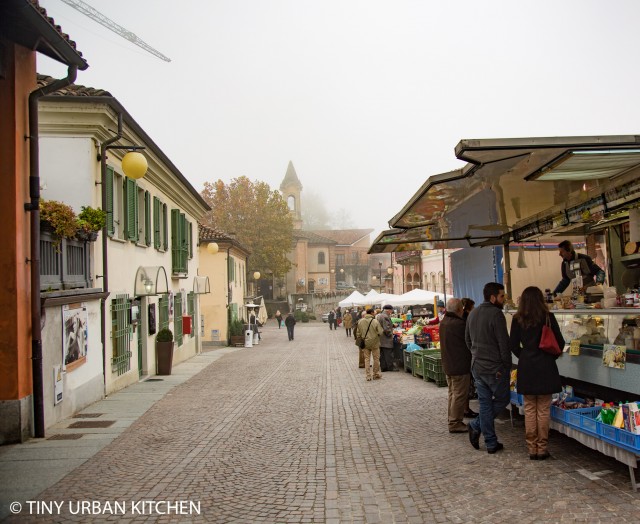
Our first stop was to visit Produttori del Barbaresco, one of the most well-known wine cooperatives in the world. Produttori del Barbaresco was founded by a local priest in 1958, who realized that the only way the local wine business could survive was if he banded together a bunch of small growers into a cooperative. The first three batches of wine were actually made in the church basement. Over time, the cooperative became one of the most famous and well-respected wine cooperatives in all of Italy.
Today, Produttori del Barbaresco has nine vineyard sites (about 250 acres) fully dedicated to the Nebbiolo grape, which are blended to make various types of Barbaresco or Nebbiolo wines. Certain years they will release special single vineyard varieties.
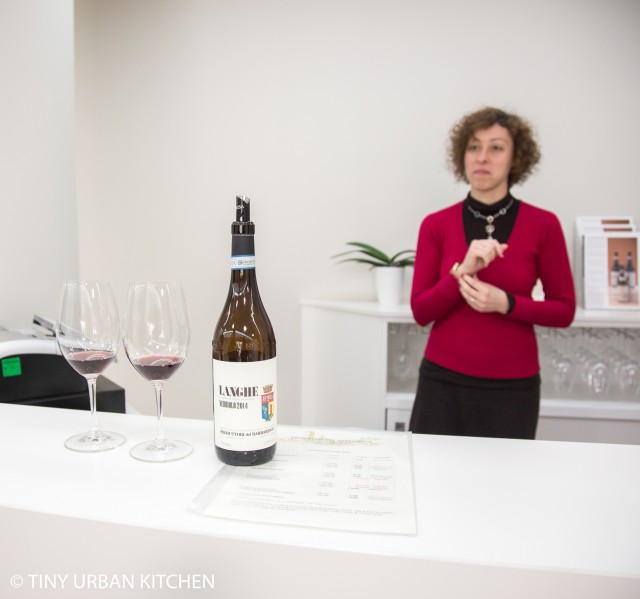
Barbaresco wines received DOC status in 1966 and DOCG status in 1980. This means that in order to be called a Barbaresco, a wine must be made from the Nebbiolo grape grown in a very specific geographic region (Barbaresco, Treiso, or Neive), and be subject to certain production requirements (e.g., aged for a minimum of 2 years, 1 year in oak, aged for 4 years to be called a Riserva, and have a minimum of 12.5% alcohol).
Wines made from grapes grown in the region that do not meet the stringent requirements can simply be called Nebbiolo.
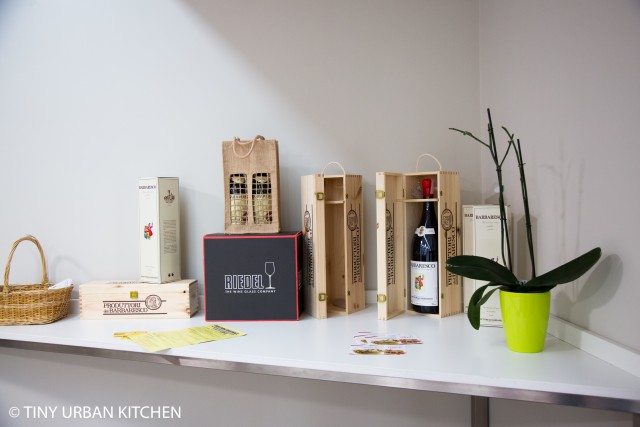
We had a fun time learning about the basics of Italian wine in this region. Robert brought a huge colorful map showing all the different wine regions in Langhe. It was also fun to try a variety of wines from one of the most famous wine cooperatives in the region.
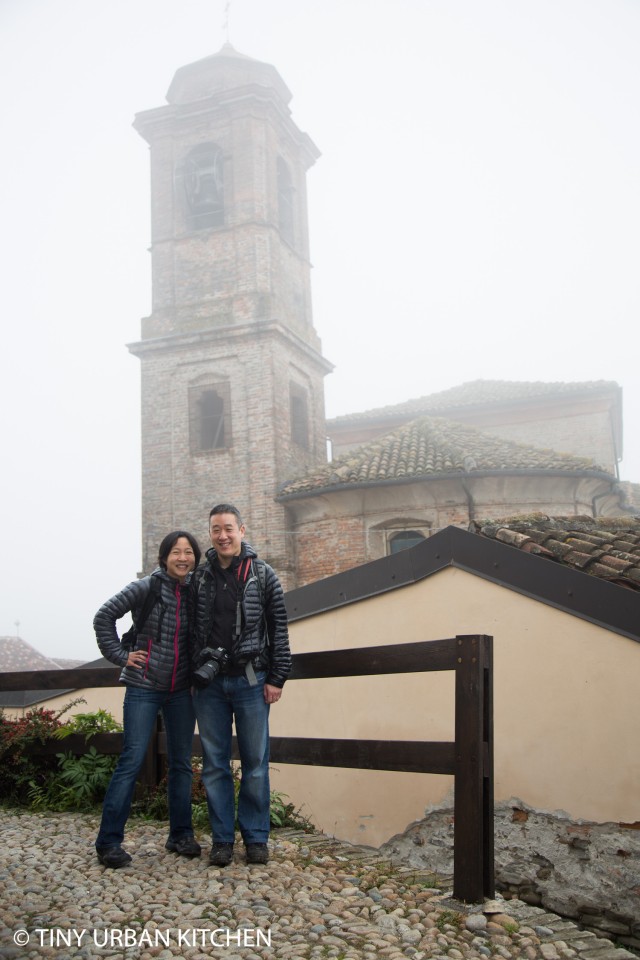
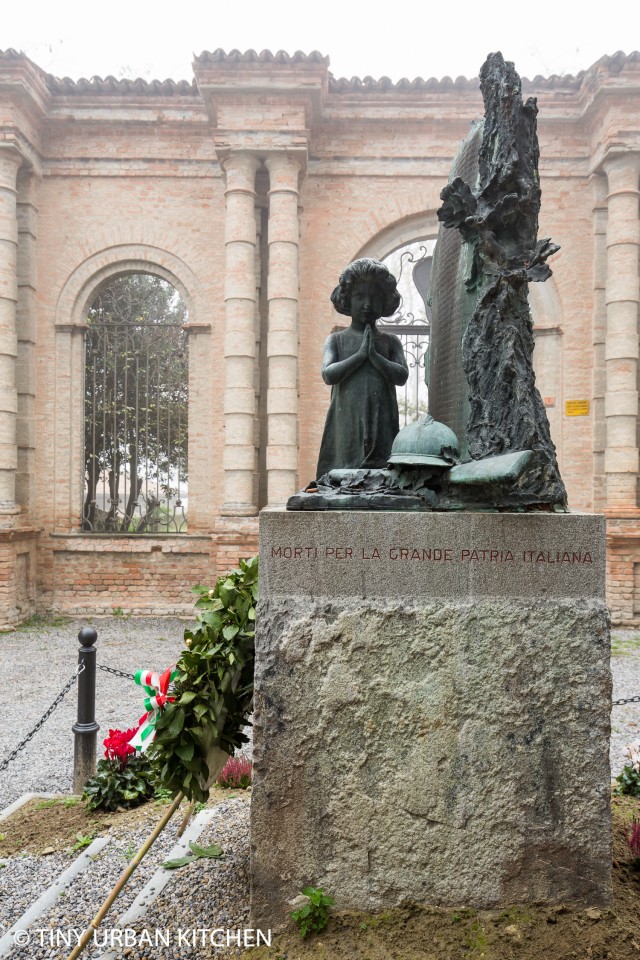
Afterwards, we walked around and explored the ancient, cobblestone roads of Barbareseco. It was really, really foggy that day, which made for some interesting photos. We visited the famous Barbaresco Tower, which typically provides amazing views of the surrounding hillside vineyard from the top. Alas, the crazy fog made it pretty impossible to see more than a few feet in front of us (the drive through the hills was quite challenging, in fact), and thus we did not even try climbing to the top of the tower.
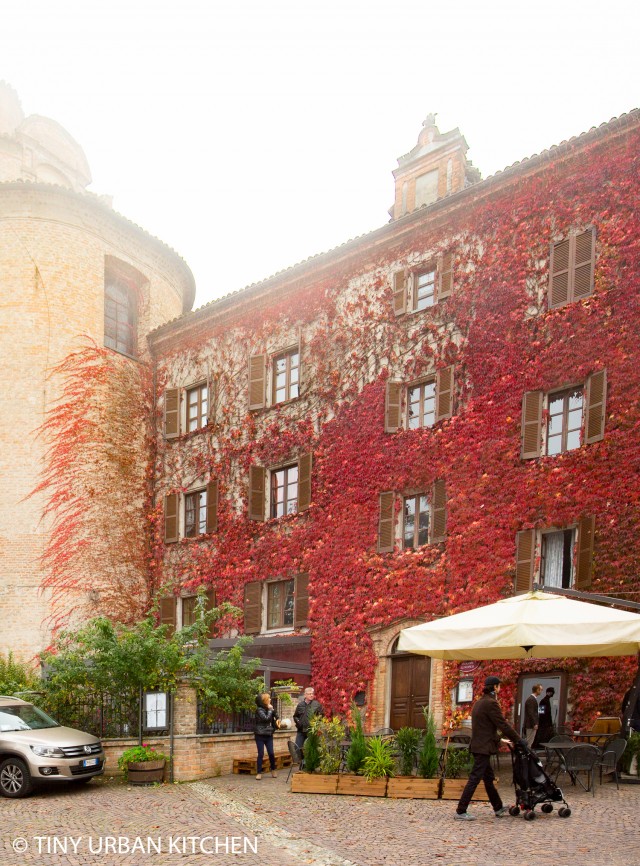
Our next stop was Neive, yet another tiny village next to Barbaresco. Neive is your quintessential not-touristy "undiscovered" Italian village. It is very walkable (and therefore, not super car-friendly). Most roads are cobblestone, and many are windy and narrow. Parking is hard to find.
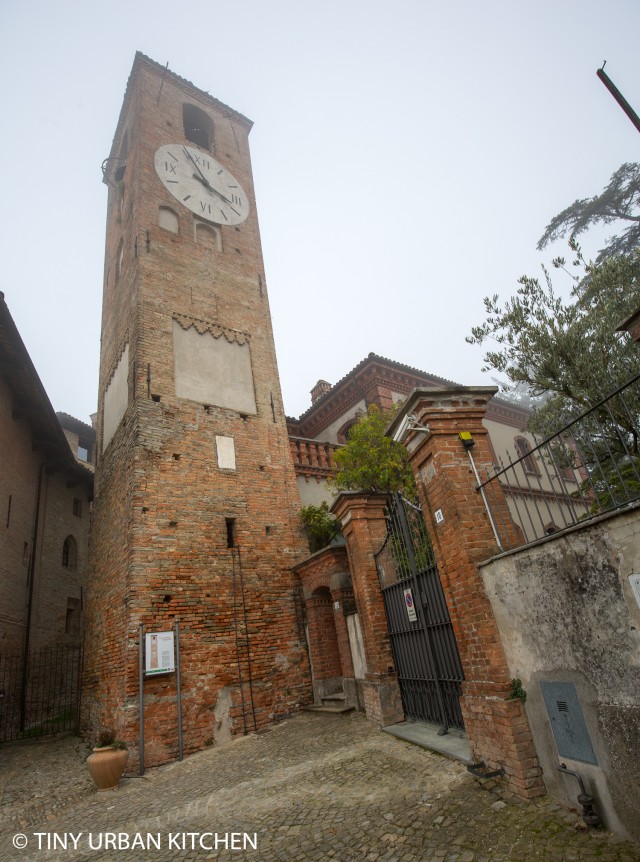
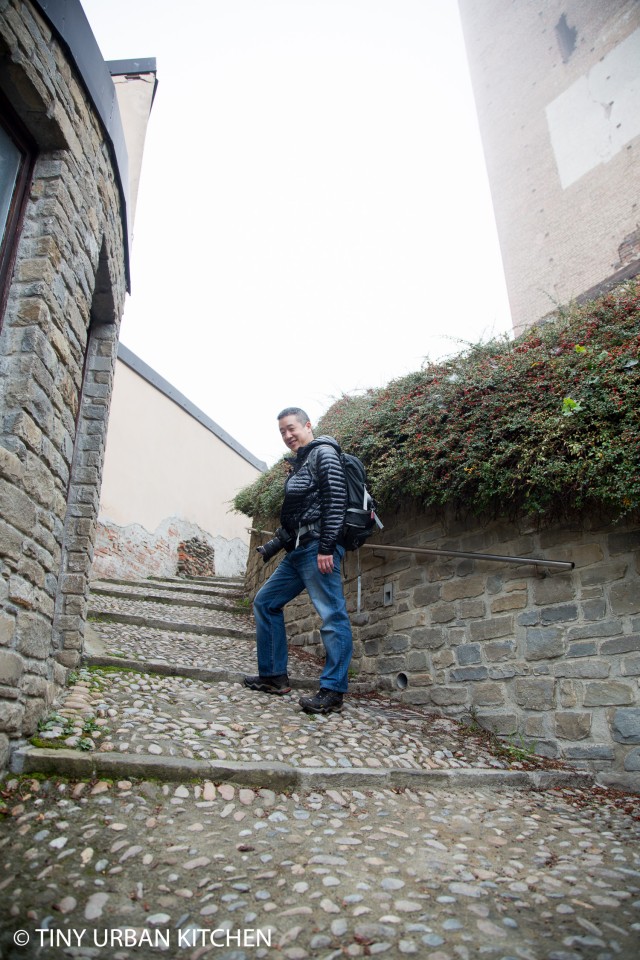
Our tour guide Robert lived in Neive, so he definitely seemed to know every single person on the street.
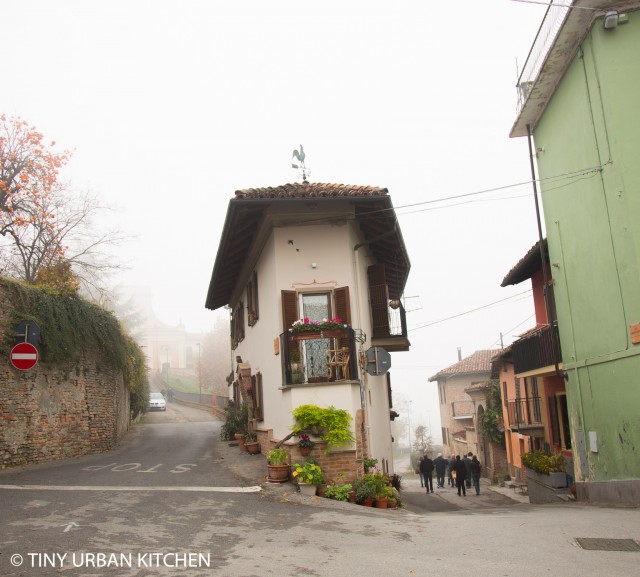
The town itself is very cute and wonderful for photo opportunities.
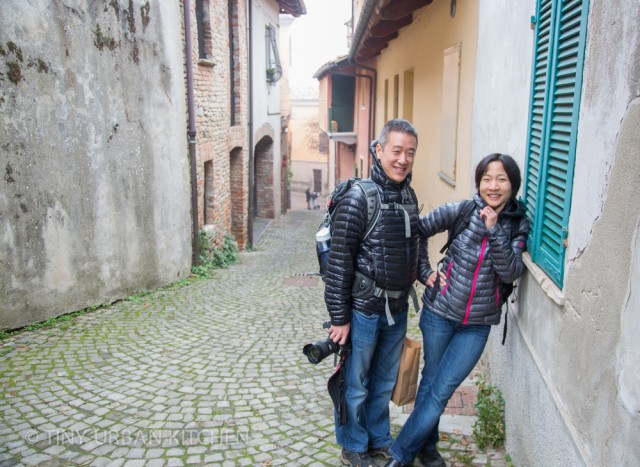
We had opted for a nicer, "higher end" lunch as part of our tour. Robert took us to Donna Selvatica in Neive, which was fabulous. I have written a separate post about that meal. Here are just a few teaser photos!
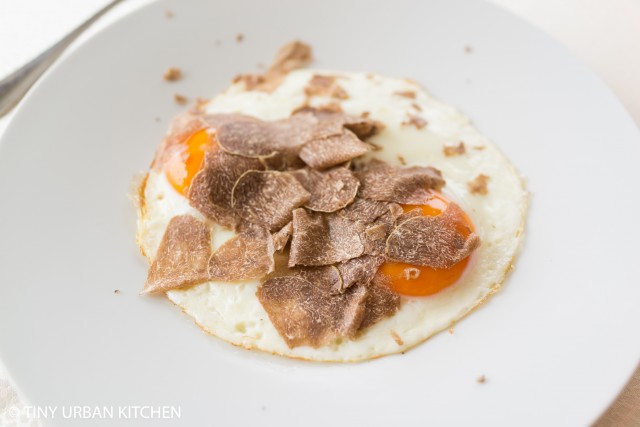
Hello white truffles!
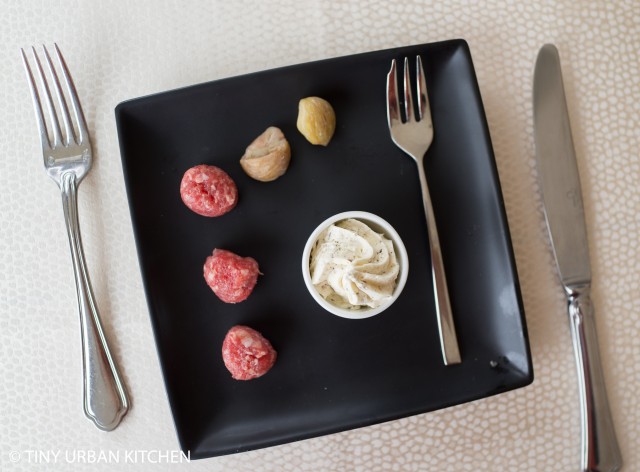
During our lunch conversation, Bryan somehow made it known that he really likes amaro. Before we knew it, Robert was leading us towards a local wine and spirits shop to sample all kinds of amaro.
"You like amaro?" asked the woman behind the counter. "What kind?"
It was hard to know, so we asked her to let us sample a variety.
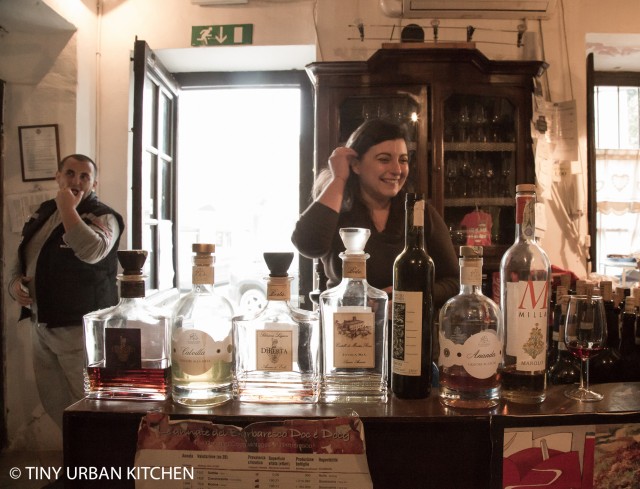
She brought out seven different bottles (!) for us to try.
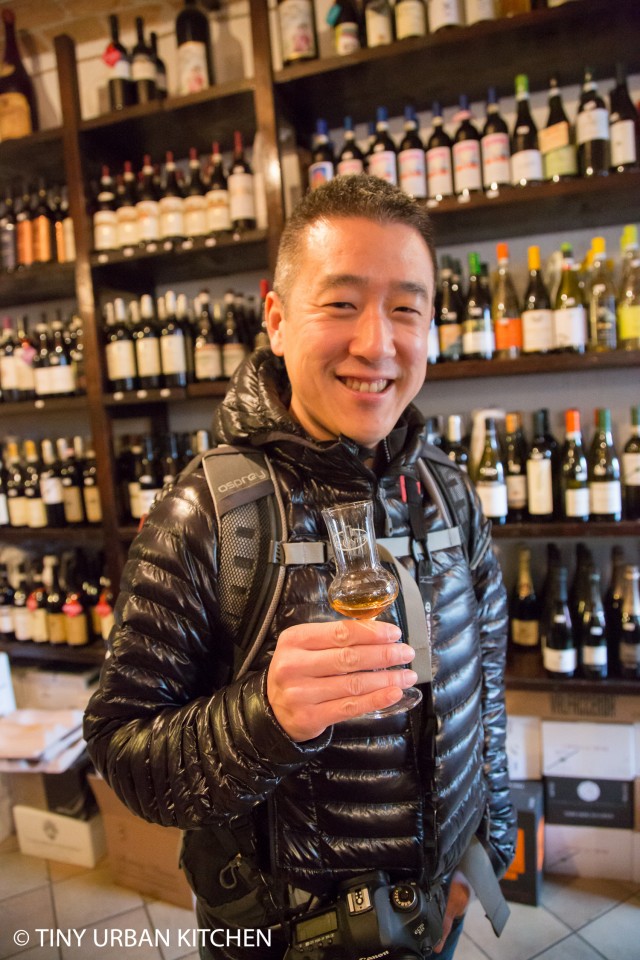
After trying several, we decided to purchase this unusual chocolate amaro that just blew us away with its rich and addictive chocolate flavor.
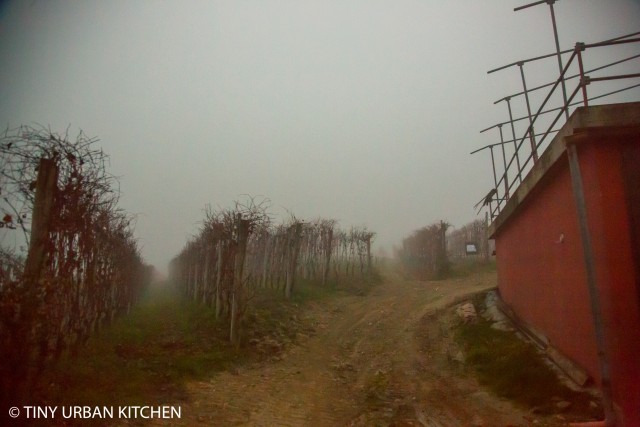
The sun was beginning to set by the time we reached our second vineyard, a much smaller, family-owned winery call Pasquale Pelissero. The father of the family, Pasquale, became one of the first producers in Neive to make and bottle his own wine in 1971. After he passed away in 2007, his daughter Ornella has continued the family business.
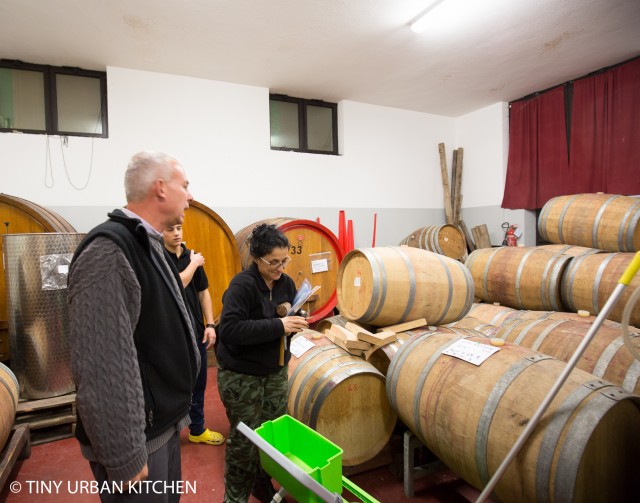
Pictured above, our tour guide chats with winemaker Ornella, who is busily doing inventory on wine with her son in the background.
It was a Sunday, and therefore most wineries were not open. However, because of Robert's close ties with Ornella, we had the rare opportunity to still do a private wine tasting inside the tasting room. Robert was our sommelier, and he poured tastes for us while teaching us about the various grapes and wine types.
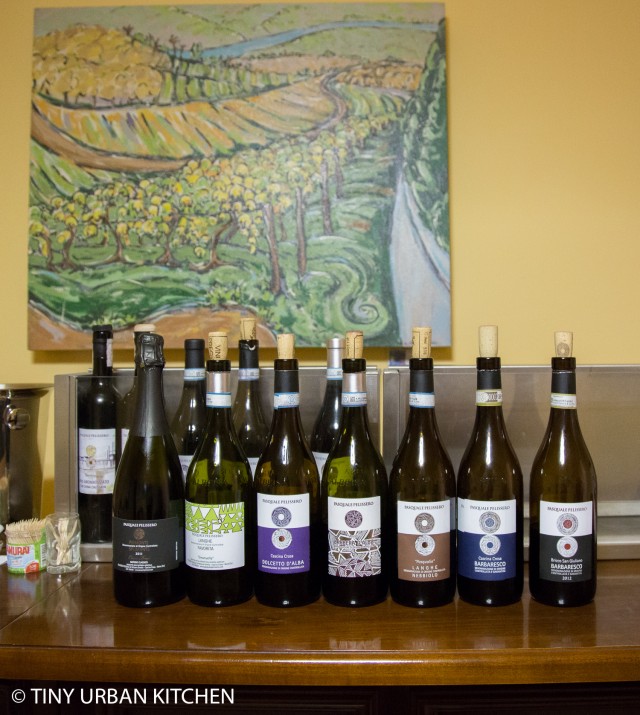
Dolcetto D'Alba
Dolcetto is another grape that is commonly grown in the Piedmont region. It is dark in color with black cherry, prune, and licorice notes. It's an everyday drinking wine that has decent body, tannins, and color. It is something the locals will open up on a Saturday morning and sip throughout the day.
Robert likes to say, "if you cut the Piemontese people, they will bleed Dolcetto." Typically lower in price, these wines are meant to be drunk young and not aged.
Barbera D'Alba
Barbera is another grape that is very common grown in the Piedmont region. It is also dark in color, but generally produces a more medium-bodied wine which is quite versatile and pairs well with many foods. In fact, Robert told us that if you want to impress a client or boss during a business meal, order a Barbera. It is a safe, people-pleasing choice that pairs well with all sorts of food yet is just exotic enough that you'll impress them with your wine knowledge and ability to pair foods with wine. It's a bit harder to find Barbera D'Alba because a lot of wineries in the Alba region choose to plant Nebbiolo if they can, since it commands a higher price.
Langhe Nebbiolo
I've already mentioned Nebbiolo above, the grape variety that commands the highest prices largely due to its ability to turn into the more expensive wines Barbaresco and Barolo. Usually vineyards will reserve their best lots of land for Nebbiolo grape destined to become Barbaresco and Barolo. Grapes that end up not making the cut are often labeled simply Nebbiolo wine from the Langhe region.
Barbaresco
The top grapes are often reserved for making Barbaresco, which must comply by certain government requirements in order to be named a Barbaresco. Most importantly, the wine must be grown in Barbaresco, Treiso, or Neive, be aged for a minimum of 2 years (at least 1 year in oak), and have a minimum of 12.5% alcohol.
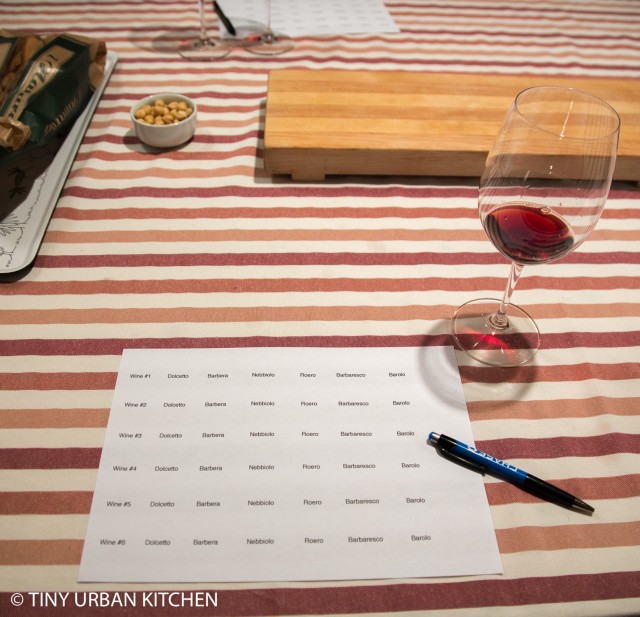
Finally, right before dinner, we headed over to Robert's wine studio for a fun blind wine tasting. After a full day of wine education, we would try 6 different wines and attempt to identify the type. Our choices? Dolcetto, Barbera, Nebbiolo, Roerco, Barbaresco, and Barolo.
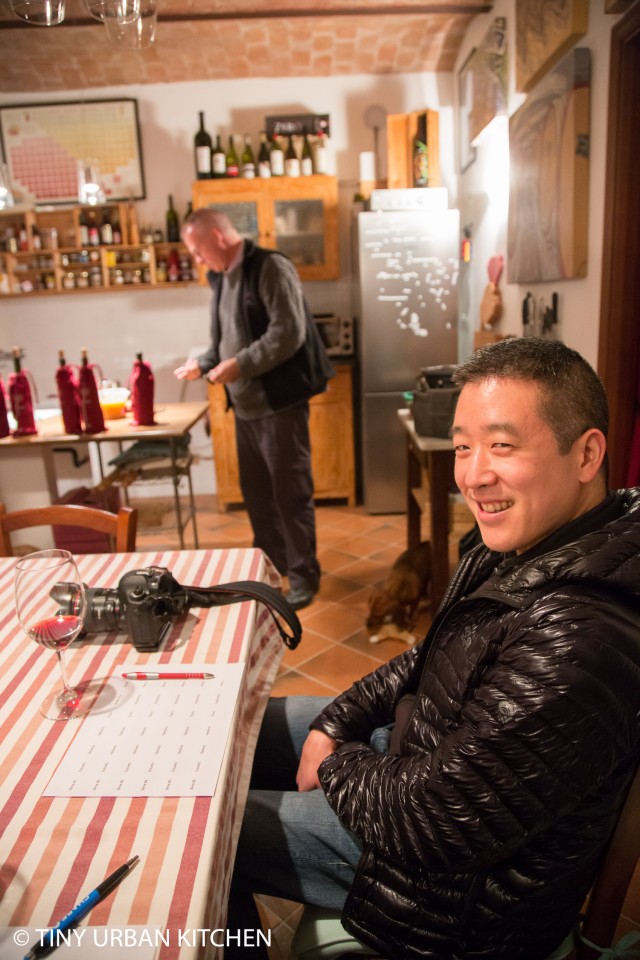
It was hard!
We learned a few basic tricks, like the fact that Dolcetto and Barbera are much darker looking wines. We knew Barolo and Barbaresco wines were aged, so we tried to match those with the more complex tasting wines.
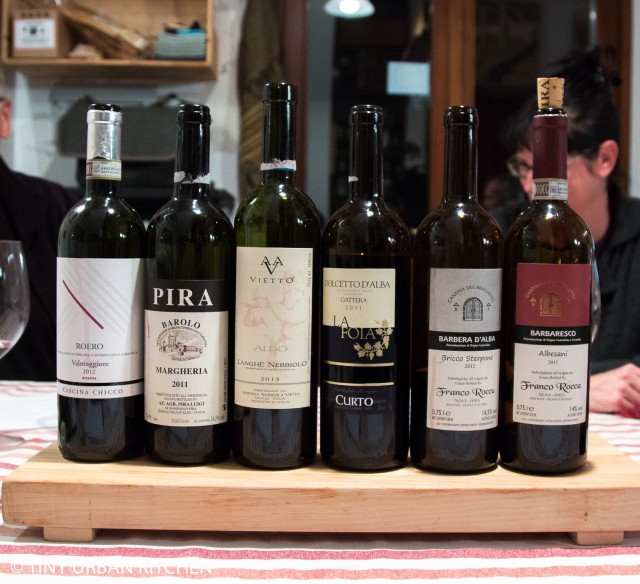
Tada! These were the wines that we actually tried. I personally did pretty dismally on the test, but it was still really fun to try tasting wines completely blind.
It was time for dinner.
Robert and Leslie were kind enough to drive us all the way out to Monchiero, even joining us for a bottle of wine and some food at a unique restaurant located inside a truffle hunter's inn. More on that in a future post!
Italy Wine Tour
Contact: Robert and Leslie Alexander from Travel Langhe
A full day tour costs 175 Euro per person (for groups of 2-8). You can opt for higher end lunches for an additional 50 Euros per person, which is what Bryan and I chose. Certain activities, such as the blind wine tasting or a truffle hunt, cost extra as well.
All Posts In This Series
Around the World Birthday Extravaganza
Alba White Truffle Fair
Osteria Dei Sognatori - A Traditional Piemontese Dinner









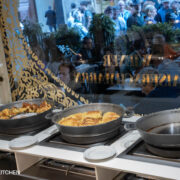
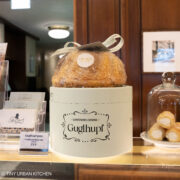
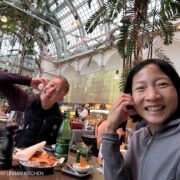
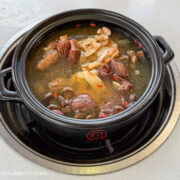
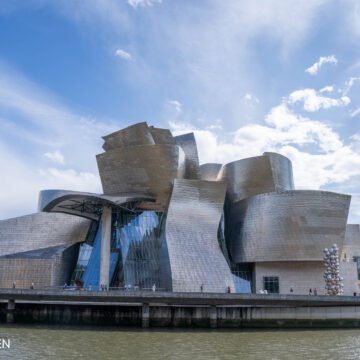
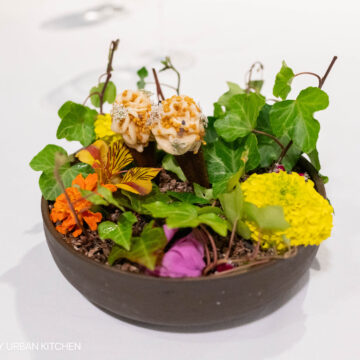
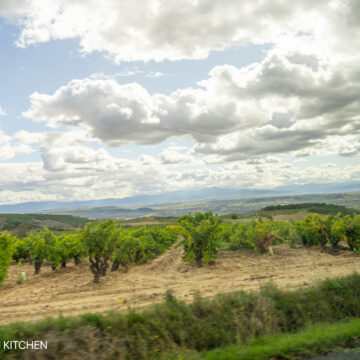
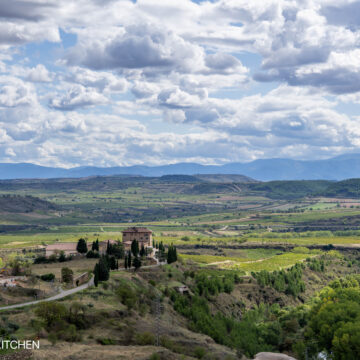
[…] that recently opened in the tiny village of Neive. We came here for lunch on the first day of our private wine tour after visiting Barbaresco in the morning. It has stunning views of the surrounding vineyards, which […]